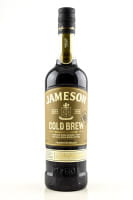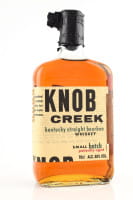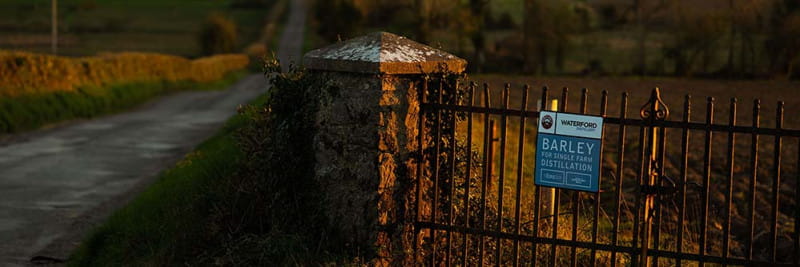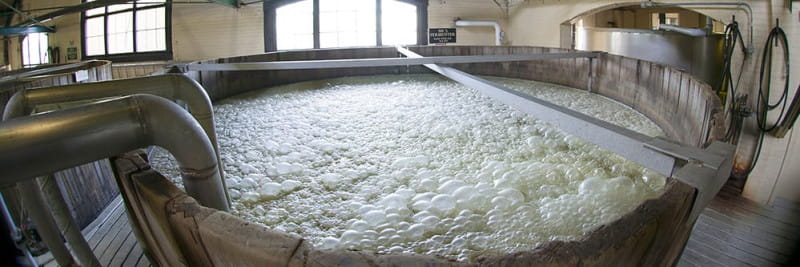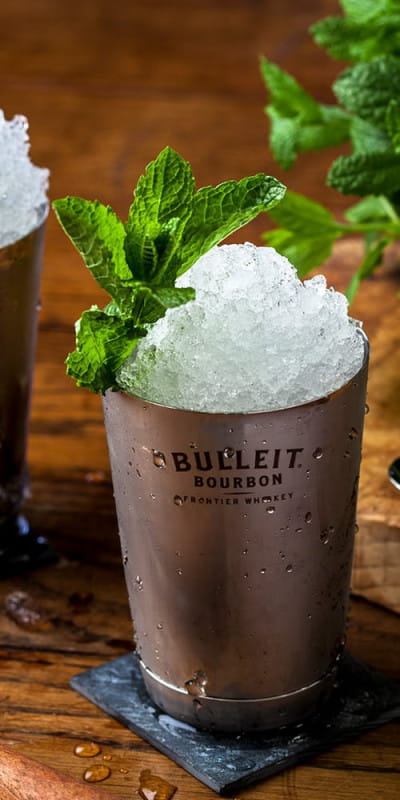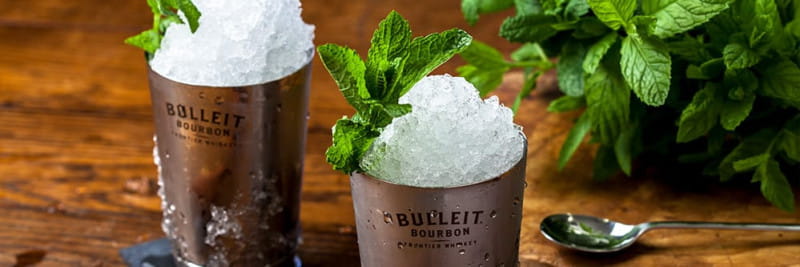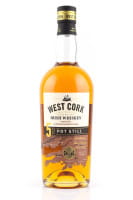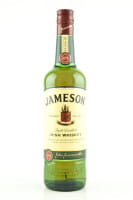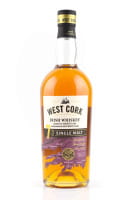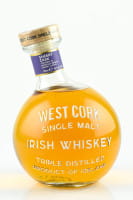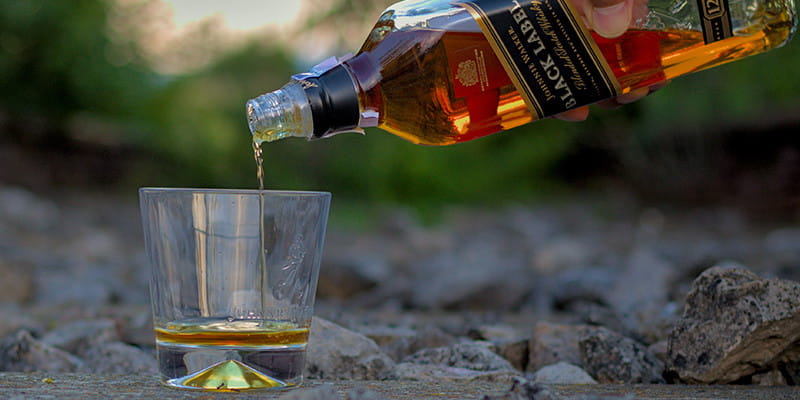
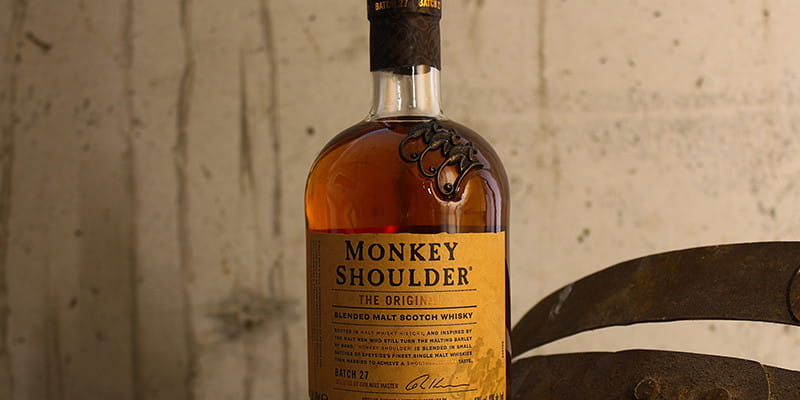
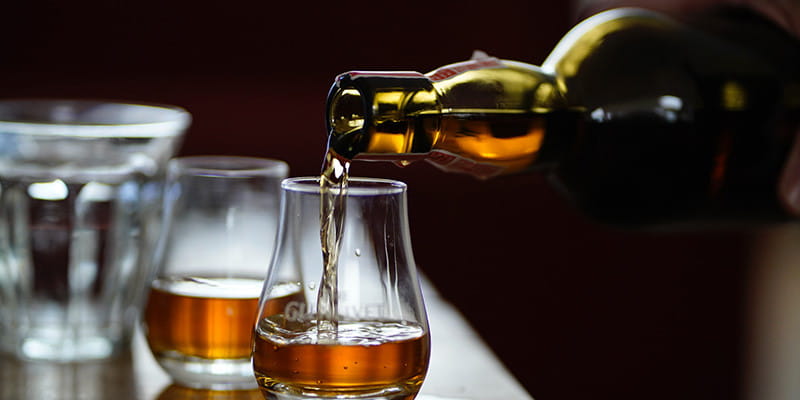
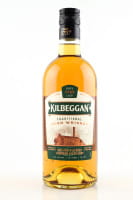
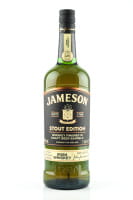
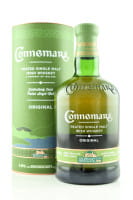
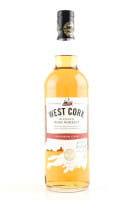

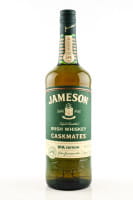
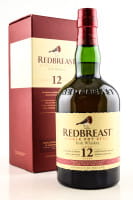
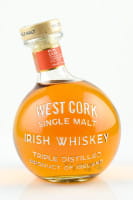




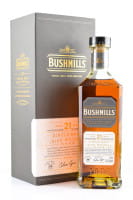
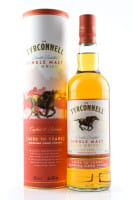
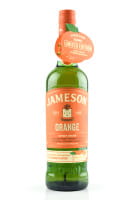
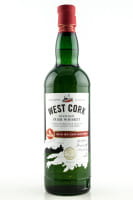
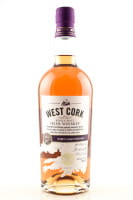
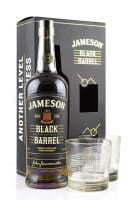
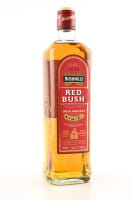
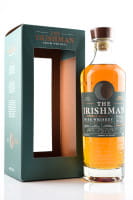


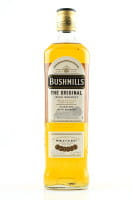
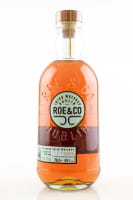
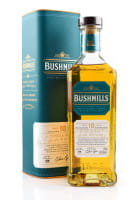









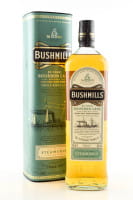

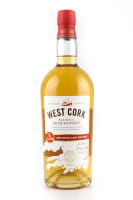

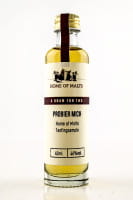










How does Irish whiskey taste?
The aromatic diversity of Irish whiskey is great. In general, however, one can say that you will often encounter mild whiskeys in Ireland. Aromas of light fruit, vanilla, caramel and sweet pastry are typical Irish whiskey notes. Most Irish whiskey is aged in ex-bourbon casks. The casks get the beautiful vanilla notes from the bourbon, which complement the character of the Irish whiskey perfectly. A typical example would be the Green Spot Pot Still Whiskey or the Writers Tears. Depending on the cask aging, aromas of berries, red fruits and Christmas spices can also emerge. Irish whiskeys get this taste, for example, through maturation in sherry casks, port wine casks, wine casks or a cask finish. Tasty examples of Irish whiskey with a part sherry or wine casks are the Redbreast 12 years, the Tyrconnell 10 years Sherry Casks Finish. You will only find a smoky taste in Ireland in the absolute exception, such as with Connemara Peated. Otherwise, Irish whiskeys are not smoky.
How is Irish whiskey made?
For a long time almost all Irish whiskey was produced by just a few distilleries. You can read why in the history section. Most whiskey brands in Ireland were produced by Bushmills, Cooley or Midleton. Some also in cooperation with each other. But today the Irish whiskey landscape is blooming again and new Irish whiskey distilleries are constantly springing up. The Irish produce three types of whiskey: single malt Irish whiskey, grain whiskey and single pot still whiskey. The blended Irish whiskeys are then created from the mixture of these whiskey types. By the way: If only the term "Irish Whiskey" is on a bottle, it is usually a blended Irish whiskey. What all Irish whiskeys have in common is that they are produced in Ireland and matured in wooden casks for at least 3 years and one day. All whiskey in Ireland must be at least 40% ABV. Only the use of caramel to adjust the color is allowed, other additives are not allowed.
What is single malt whiskey?
The Single Malt Whiskey is made from a mash of 100% malted barley. Barley is considered to be the most aromatic of all grains, giving the single malt depth and flavor. Similar to Scotland, single malt whiskey in Ireland is mostly distilled in traditional copper pot stills. If you've read the history section, you'll know how important the quality of their whiskey is to the Irish. However, one difference between Irish and Scottish single malt is that the Irish are not bound by law to use pot stills. In theory, other single malt stills could also be used. However, the classic pot stills distillation is also common in Ireland for single malt. Single malt in Ireland can be double or triple distilled. The most famous example of an Irish single malt is Bushmills. Pay close attention to the bottle label here, because Bushmills also makes blended whiskey under the brand name. Other Irish single malt producers include Tyrconnell, Connemara (peaty), Waterford, West Cork and Dingle.
What is Pot Still Whiskey?
The pot still whiskey is, so to speak, the sibling of the single malt. Pot Still Whiskey is a unique type of whiskey that is currently only available in Ireland. Pot still whiskey is made much like single malt Irish whiskey. The two differ in only one point. Single malt must be made from 100% malted barley. In the mid-18th century, the English introduced a malt tax in Ireland. The Irish didn't like that at all and so they began to experiment with a mixture of malted and unmalted barley in whiskey production. Since this whiskey was no longer a single malt, a new name had to be found. The Pot Still Whiskey, also called “Pure Pot Still”, was born. If the pot still whiskey comes from a distillery, it is called a single pot still, like the term "single" in single malt. As the name suggests, the pot still whiskey is also distilled on pot stills and aged for more than 3 years The result is a full-bodied, creamy whiskey with fine grain notes and a nice background spice.As classic representatives of the Pot Still Whiskey genus, we recommend the Redbreast 12 year old or the Green Spot Pot Still Whiskey.
Zahlen & Fakten zu Jameson
Adresse: Midleton Distillery, Old, Distillery Walk, Midleton, Co. Cork, P25 Y394, Irland
Gegründet: 1780 (Jameson Marke), 1975 (heutige Midleton Distillery)
Region: Irland, County Cork
Besitzer: Pernod Ricard
Typ: Blended Irish Whiskey
Rauch: Unpeated/ Ungetorft/ Nicht rauchig
Status: aktiv
Kapazität: ca. 64.000.00 lpa (Liter pro Jahr)
Brennblasen: 3 Pot Stills (75.000 l), 3 Pot Stills (in der Whiskey School), 11 Column Stills
Washbacks: 48
Mashtun: verschiedene
Wasser: Fluss Dungourney
Visitor Centre: Ja
Telefon: +353214613594
Website: www.jamesonwhiskey.com

Bildnachweis/ Bildquelle: Pernod Ricard Deutschland GmbH
What is the difference between whiskey and whisky?
If you look closely, you will find different spellings on whiskey and whisky bottles around the world. Sometimes whiskey, sometimes whisky. Why is that? In fact, the spelling is thought to have evolved as a result of the old rivalry between Scotch Whisky and Irish Whiskey. One hypothesis for the different spellings is the introduction of the Coffey Still in the mid-19th century. While the Irish stuck to their pot still whiskey, the Scots used the new distillation method to produce inexpensive whisky of sometimes dubious quality. An obvious theory says that the Irish wanted to differentiate themselves from this whiskey from then on and introduced the spelling "Irish Whiskey". Even today, every Scottish whisky is still written without an "e", while in Ireland whiskey is always written with an "e". This also explains why the spelling "whiskey" dominates in the USA, but is not used exclusively. Because with the great emigration in the mid-19th century, millions of Irish made their homes in the United States and brought their ideas and spelling with them.Today, outside of Scotland and Ireland, any whiskey maker can choose how the whiskey or whisky should be spelled However, the spelling indicates which country served as inspiration.
What is the difference between Irish and Scotch whiskey?
What is the difference between Irish Whiskey and Scotch Whisky? While Ireland and Scotland share the same whiskey roots, certain differences in whiskey traditions have crept into the two Celtic nations. This can already be seen from the different spelling of Scotch Whisky and Irish Whiskey. We have summarized a few differences and similarities here to give you an overview:
Similarities between Irish Whiskey and Scotch Whisky:
- The whiskeys of both countries must be based on a grain mash. So whiskey and whisky cannot be distilled from other ingredients such as potatoes or molasses.
- The maximum alcohol content of the distillation must not exceed 94.8 percent by volume.
- The maturation of the whiskey must be at least 3 years, only then can the product be called whiskey or whisky.
- If the age is stated on the bottle, each cask used must have reached this age.
- The bottling must be done with at least 40% vol.
- Only caramel E150 a is permitted as an additive. Other additives are prohibited.
- Both mature primarily in casks that previously contained bourbon. Casks with a pre-assignment of sherry, port and wine are also popular.
Differences between Irish Whiskey and Scotch Whisky:
- Scotch whisky and Irish whiskey are almost always spelled differently. The Irish Waterford whisky is an exception.
- Triple distillation is common (but not mandatory) in Ireland and double distillation in Scotland.
- In Ireland predominantly non-smoky whiskey is produced without the use of peat. In Scotland, smoky whisky is made with peated malt.
- In Scotland, whisky is required by law to be aged in oak casks. In Ireland it only has to be wooden barrels or casks, so the Irish are a bit more flexible here. However, oak barrels are best, which is why oak is used almost exclusively in Ireland.
- In Scotland, single malt must be distilled on pot stills. This is not fixed in Ireland, but is currently the main way of doing things.
- Single Pot Still Whiskey is a type of whiskey unique to Ireland.
The History of Irish Whiskey
Green meadows, sheep, Irish pubs, Saint Patrick's Day and whiskey. Whiskey is part of the Emerald Isle's DNA, after all Ireland is considered by many (especially the Irish) to be the birthplace of whiskey. It is almost surprising that Irish whiskey was on the brink of collapse in the mid-20th century. In order to understand how this came about, we have to do a little tour through irish history.
Irish Pride - Curse and Blessing
Irish whiskey dominated the world market in the late 18th and early 19th centuries. There are said to have been over 1,000 distilleries back then, counting illegal distilleries, it must have been well over 2,000. The most important trading partners were the USA and the countries of the British Empire. In 1830, however, the Irish made a serious strategic mistake. Aeneas Coffey's new invention of continuous distillation, the Coffey Still, found no buyers in Ireland. The Irishman had developed a distillation method that replaced the time-consuming pot still distillation with a more effective continuous distillation. The resulting whiskey was less complex but much quicker to make. The Irish whiskey producers were probably suspicious of the method and did not meet the current quality standard. Frustrated, Aeneas Coffey approached the Scots with his invention, which recognized the potential of the faster and more cost-effective distillation method. By the time the Irish realized their mistake, the new technology had already spread througout Scotland and the cheap grain whisky was being used to blend with the then rough Scottish single malts. Blended Scotch Whisky was born and Irish Pot Still Whiskey had a strong competitor. In 1838 a teetotaler club was founded in Ireland by the clergyman Theobald Mathew, which was very popular. A first dent in the Irish whiskey empire.
The Great Famine in Ireland
Then, in the mid-19th century, Ireland suffered a catastrophic famine. “The Great Famine” or Irish “An Gorta Mór” was triggered by a potato blight that virtually wiped out the Irish people's staple diet. Whatever grain was available became valuable staple food. In addition, cholera and typhoid epidemics hit Ireland. The consequences were devastating. More than 12% of the Irish population died as a result of the famine, about two million sought their salvation by fleeing and emigrated mainly to the USA. The market share of over 60% dwindled to under 35% by the end of the 19th century. In the course of the industrial revolution, the country slowly recovered, but countless distilleries fell by the wayside.
The Case of Irish Whiskey
While the early 20th century plunged Europe into an unrelenting world war, Ireland also struggled with secession from the United Kingdom. Not a good time for whiskey. What began in 1916 with the Easter Rising ended in 1923 with the establishment of the Irish Free State. This also meant the collapse of the numerous export markets in the Commonwealth. As if that wasn't enough, by 1920 Prohibition had begun in the United States of America, literally drying up the most important market for Irish whiskey. Whiskey consumption shifted to the black market. Smuggling and illegal mixing of bootleggers and moonshiners was the order of the day. For many, fast money was more important than the quality of the goods, which should permanently damage the good reputation of Irish whiskey in the USA. The end of Prohibition in 1933 could not change the decline of the Irish whiskey industry, because the world was hit by a severe economic crisis. The Great Depression hit Ireland particularly hard.
The closing of ranks of the last Irish whiskeys
After the Second World War, the fate of Irish whiskey seemed sealed. As late as the 1950's, even big brands like Tullamore and Kilbeggan had to close their doors. In 1966 only three of the once thousands of whiskey distilleries were left and the market share had shrunk to 2%. The Irish whiskey industry was threatened with extinction. The remaining three producers Cork Distilleries Company, John Jameson & Sons and John Powers & Son met in a conspiratorial meeting to avert the demise of Irish whiskey. Once bitter rivals realized that they alone were doomed and formed the Irish Distillers Group. Whiskey production was moved to the Midleton Distillery. In 1970 Bushmills also joined the IDG. But the damage was irreparable and most Irish whiskey brands were history. When the French beverage company Pernod Ricard bought the Irish Distillers Group in 1988, there was not a single Irish whiskey distillery left in Irish hands overnight.
How the French saved Irish whiskey
What must have been a national shock for the patriotic Irish at first may have saved Irish whiskey from today's perspective. Because of the successful company, the Irish whiskey brands Jameson and Paddys could continue to exist on the market and be rebuilt with financially strong marketing. In addition, it perhaps also aroused the defiance and Irish national pride that ultimately contributed to today's Irish whiskey renaissance. A certain John Teeling gave the starting signal for this development in 1984 with the purchase of the Cooley Distillery for around 120,000 pounds. A completely crazy purchase for the time. The mothballed Kilbeggan Distillery was soon taken over by Cooley and converted into a barrel store and whiskey museum. With Irish whiskey brands such as the smoky Connemara Peated Single Malt, Tyrconnell and Locke's, Cooley has become a force to be reckoned with on the Irish whiskey landscape. The success drew the attention of the American beverage company Beam Inc. (Jim Beam) to Cooley and in 2011 John Teeling could not resist the company's offer and sold the independent distillery and whiskey brands for around 70 million euros. But the Irish whiskey spirit was already rekindled. John Teeling's sons founded the Teeling Whiskey Company in 2012, building a new Teeling Distillery in what was once the whiskey capital of Dublin, in the infamous Dublin Liberties. After more than 120 years, Irish whiskey returned to the Irish capital. The logo that proudly looms over the distillery gates is, of course, a phoenix. The young distillery could not have chosen a more suitable heraldic animal. The future of Irish whiskey is bright!
Bourbon cocktails
Old Fashioned: The No. 1 among bourbon cocktails. How do you make an Old Fashioned? It is available in innumerable variants. Here are the basics: Take a tumbler and add 1-2 dashes of simple syrup, 3-5 dashes of a bitters and 8-10 cl of your bourbon of choice. Add a large ice cube (it melts slower than many small ones). Finally, you take an orange zest, squeeze it out over the glass (or wet the rim of the glass with it) and put it in the drink - your Old Fashioned is ready.
Mint Julep: The perfect bourbon drink for hot summer days. How do I make a mint julep? You need crushed ice, 1cl simple syrup and 10cl bourbon. Add mint (fresh if possible). Grab a tumbler and first add the sugar syrup and the mint leaves to the glass. If you want to be really original, get a copper julep mug. Now crush the mint leaves with the bar pestle or a spoon. Now the bourbon is allowed to go with it, for example a Four Roses Small Batch. Fill the glass with crushed ice and garnish with fresh mint sprigs. Your mint julep is ready.
Whiskey Sour/ Bourbon Sour: Combine the sweetness of bourbon with the acidity of lemon. How does a whiskey sour go? You will need lemon juice, bourbon, and an orange zest or cocktail cherry. If you like, you can add some extra sweetness with maple syrup. Just throw all the ingredients in a shaker with ice and shake. Finished! You can drink the whiskey sour like this or with an ice cube.


What is Irish Grain Whiskey?
The grain whiskey is distilled from a mash of predominantly unmalted grain. Various types of grain are used, such as barley, rye, wheat and corn. Grain whiskey is distilled on column stills in a continuous distillation process, e.g. Coffey Stills, Patent Stills and Column Stills. The grain whiskey is very light and sweet and is mostly used for blending with blended Irish whiskeys. You can also buy and enjoy some grain whiskeys as single grain whiskeys. A case in point is Kilbeggan Grain Whiskey.
What is Poitín?
When talking about Irish whiskey, Poitín has to be mentioned. Poitín or Poteen is Ireland's synonym for moonshine, mostly grain-based. It is pronounced “Potsheen”. In Ireland, moonlighting is closely linked to the Irish history of resistance against England and is therefore an important cultural asset. Poitín isn't a whiskey, but it has a lot of overlap. Historically, Poitín could even be considered the predecessor of whiskey, as Poitín resembles uisce beatha, the Gaelic word for water of life, from which whiskey later evolved. Poitín is an unripened grain brandy that is sometimes refined with herbs and spices, but is often simply enjoyed on its own. The alcohol content of Poitín varies but is often between 50 and 60% vol. Today, Poitín is also sold legally and many of today's whiskey producers offer Poitín as a nostalgic cultural asset alongside their whiskey.
What is Blended Irish Whiskey?
Blended Irish Whiskey, or just simply called Irish Whiskey, is a mixture of single malt or pot still whiskey with light grain whiskey. The best-known example is Jameson Irish Whiskey. But brands like Paddy Irish Whiskey, Powers Irish Whiskey and Tullamore Dew are also well-known brands.
Our Irish whiskey recommendations
Jameson Irish Whiskey
THE classic Irish blended whiskey par excellence and Ireland's export hit. If you are looking for a smooth, fruity blended whiskey, look no further than Jameson. From the classic Jameson to variants like the Jameson Crested or Jameson Black Barrel, you have a lot to choose from.
Redbreast Pot Still Whiskey
The classic single pot still whiskey from Midleton. A round, smooth and aromatic whiskey with wonderful sweet notes of toffee and marzipan. Redbreast pairs well with sherry casks. Our recommendation when it comes to pot still whiskey. The Redbreast 12 years should not be missing in any bar.
Connemara Single Malt
For a long time the only smoky (peated) Irish single malt whiskey. The Connemara Peated is a delicious single malt with aromas of heather, honey and subtle peat smoke. A price-performance hit that every Ireland fan should have at home. Provided you like smoky whisky.
Tyrconnell Single Malt
Like Connemara Single Malt, Tyrconnell Single Malt is made at Cooley Distillery. Tyrconnell is double distilled, making it a little closer to its Scottish siblings than other Irish whiskeys. A full-bodied single malt with strong caramel notes and fine spice. A real recommendation, especially for Scotch fans who want to get closer to Irish whiskey.
Bushmills Whiskey
The classic from Northern Ireland. Bushmills produces both triple distilled single malt whiskey and blended Irish whiskey. Bushmills is the epitome of smooth whiskey. Not a trace of smoke and sweet notes of vanilla, light fruits and malt can be found here.
Kilbeggan Whiskey
Perhaps the oldest whiskey distillery in the world. Today it is mainly used as a whiskey museum. Soft Kilbeggan Grain Whiskey is made at Cooley Distillery.
Dingle Distillery
A small friendly craft distillery in the south-west of Ireland on the Dingle Peninsula. Dingle makes excellent Irish single malt and single pot still whiskey. Classic triple distillation is carried out on three copper stills.
Waterford Distillery
Perhaps one of the most exciting projects in Ireland at the moment. The former owner of Bruichladdich Mark Reynier concentrates completely on the topic of terroir. With Waterford's Single Farm Single Malt you can explore how whisky from different farms tastes. Exciting! However, one could argue about whether Waterford is still Irish whiskey. Because the distillery is not only run by a Scot, it also has Scottish pot stills and, to top it all off, spells its whisky without an “e”! Whiskey or Whisky... You should definitely try Waterford Single Malts!
West Cork Distillers
West Cork Distillers produce a variety of Irish whiskeys, including West Cork Single Malt. West Cork is a typical Irish whiskey. Light, fruity with notes of pears, fresh apples and vanilla, as well as caramel and sweet pastry notes. Here you can get inexpensive single malts with a special cask finish such as bourbon, sherry, port wine and even calvados.
Writer's Tears Whiskey
A blend of pot still whiskey and single malt whiskey. Basically, Writers Tears is something like a blended malt, except that one ingredient is pot still whiskey. Writers Tears is a smooth, harmonious Irish whiskey. A great quality entry-level whiskey.
Green Spot Pot Still Whiskey
Green Spot Pot Still Whiskey is a delicious, smooth Pot Still Whiskey from the Midleton Distillery. Soft, fruity and pleasant. Absolute recommendation. It is also available with different wine finishes and in older versions as Yellow Spot 12 years und Red Spot 15 years.
Teeling Distillery
The legacy of John Teeling, who opened his own distillery in Dublin with the money from the sale of Cooley Distillery. High-quality single malt, single pot still whiskey and Irish whiskey are produced here.
The Dublin Liberties Irish Whiskey
A modern, progressive distillery in the legendary Dublin Liberties, an area of Dublin famous for pubs, prostitution and anything else frowned upon by the Catholic Church in the 18th and 19th centuries.
